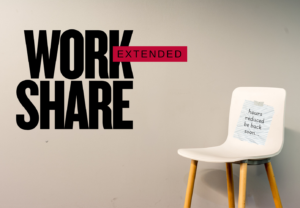Canada’s Answer to the Great Resignation? Behold the Great Retirement
The Great Retirement
Since the pandemic erupted in 2020, employers north of the 49th parallel have been told to brace for an exodus of workers: a phenomenon known in the U.S. as “The Great Resignation.” And while there has indeed been a significant amount of turnover in the Great White North, compared the U.S. the impact has been relatively muted. In fact, some observers say that the Great Resignation isn’t really happening in Canada at all.
And so, this certainly means that employers across the country can breathe a sigh of relief, since unlike their American counterparts they don’t have to worry about mass resignations and hyper-competitive talent markets, right? Wrong.
It turns out that Canada is, in fact, experiencing its very own exodus of workers, except the primary group of folks who are making their way towards the exit aren’t heading to another job: they’re heading for retirement.
The July 2022 employment report from Statistics Canada revealed that a record 300,000 Canadians retired between July 2021 and July 2022. That was up a whopping 30 percent from the same time last year, and nearly 15 percent from the few months heading up to the outbreak of the pandemic in early 2020.
What’s more, nearly 150,000 newly-minted retirees over the past year are between the 55 and 65 years old, which puts them in the “early retiree” category. This was nearly 50 percent higher from last summer, when the number of early retirees fell to their lowest levels since 2013 — a dynamic that was no doubt driven by older workers who opted to stick it out during the first several months of the pandemic — but finally said enough is enough (possibly over a video call with infuriatingly choppy audio and video).
The takeaway for employers who are either losing valuable workers to retirement, or who suspect that a costly retirement wave is coming? There are two action items: be proactive about making the workplace older worker-friendly, and verify (and through a third-party if necessary) that subtle and systemic age discrimination has not taken root. Let’s start with the former.
Tips for Making the Workplace Older Worker-Friendly
The Society for Human Resources Management (SHRM) and HR Daily Advisor, respectively, suggest these best practices for making the workplace attractive and inviting for older workers:
- Include people of all ages in your diversity and inclusion (D&I) strategy.
- Eliminate policies that exclude older workers such as messages displayed on the company website, or in announcements that only show photos of younger workers.
- Remove questions from job applications that ask age-related questions such as date of birth or date of graduation.
- Include older workers on interview panels.
- Avoid terms in job ads like “high-potential” and “energetic” and “digital native” which can be viewed as code for “young.”
- Develop employee resource groups that are multigenerational.
- Use employees’ personal stories as a way to challenge age stereotypes.
- Offer benefits that appeal to older workers, such as health insurance, retirement benefits and long-term-care insurance.
- Make employee learning and development programs available to all employees.
- Train supervisors and managers to know how to motivate and engage subordinates who are older than them.
- Conduct surveys to see what types of benefits or changes older workers want.
- Provide training sessions to help older workers understand new technologies.
- Ensure that absence policies are implemented fairly.
- Analyze and adjust job duties to make tasks less strenuous (sometimes this may be achieved by extending deadlines).
Subtle Signs of Age Discrimination in the Workplace
Leaders need to objectively know — not subjectively assume — that age discrimination has not taken root in their organization. The SHRM and AARP, respectively, highlight these subtle signs:
- Laying off older workers while simultaneously hiring younger ones.
- Directing older workers to train younger people in their current job duties.
- Abruptly shifting responsibilities, such as certain accounts, to younger workers.
- No longer giving raises to older workers.
- Suddenly giving older workers poor performance reviews, despite them having a positive history.
- Assigning older workers with new goals and expectations that are difficult for anyone to realistically reach.


 Our HR solutions experts can recommend the right mix of HR outsourced services to make your entry into Canada easier.
Our HR solutions experts can recommend the right mix of HR outsourced services to make your entry into Canada easier.  Pivotal Employment Management Services co-hires your workforce, simplifying entry of your business in Canada.
Pivotal Employment Management Services co-hires your workforce, simplifying entry of your business in Canada. 















